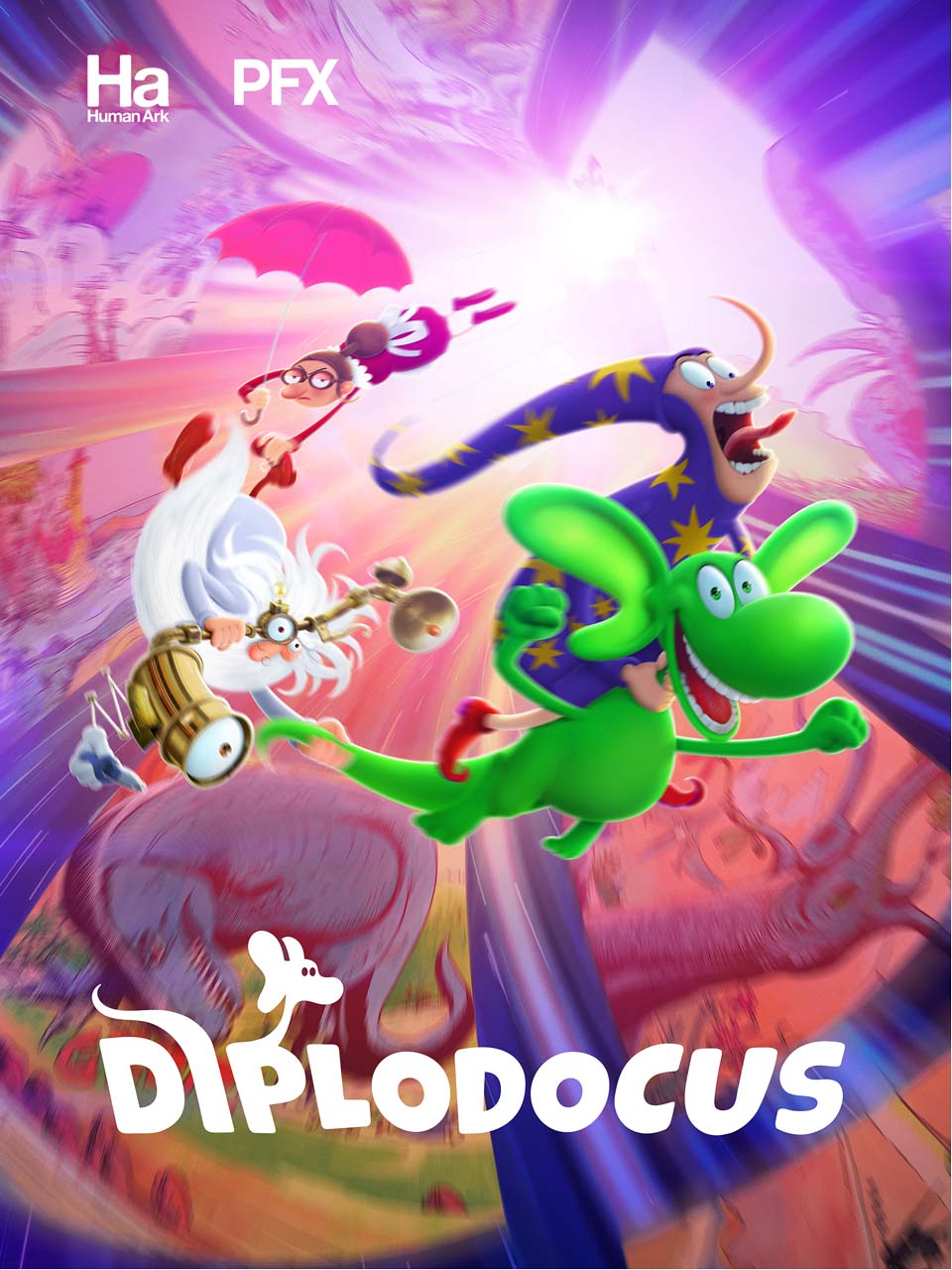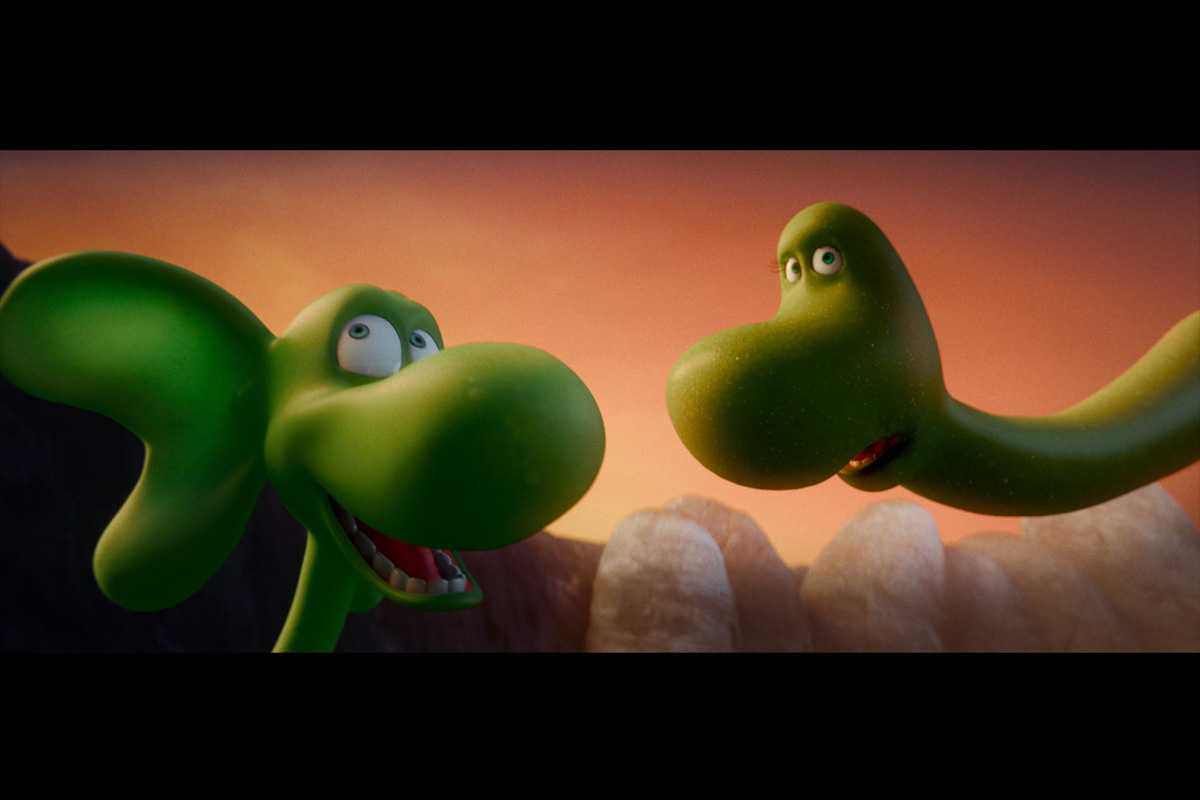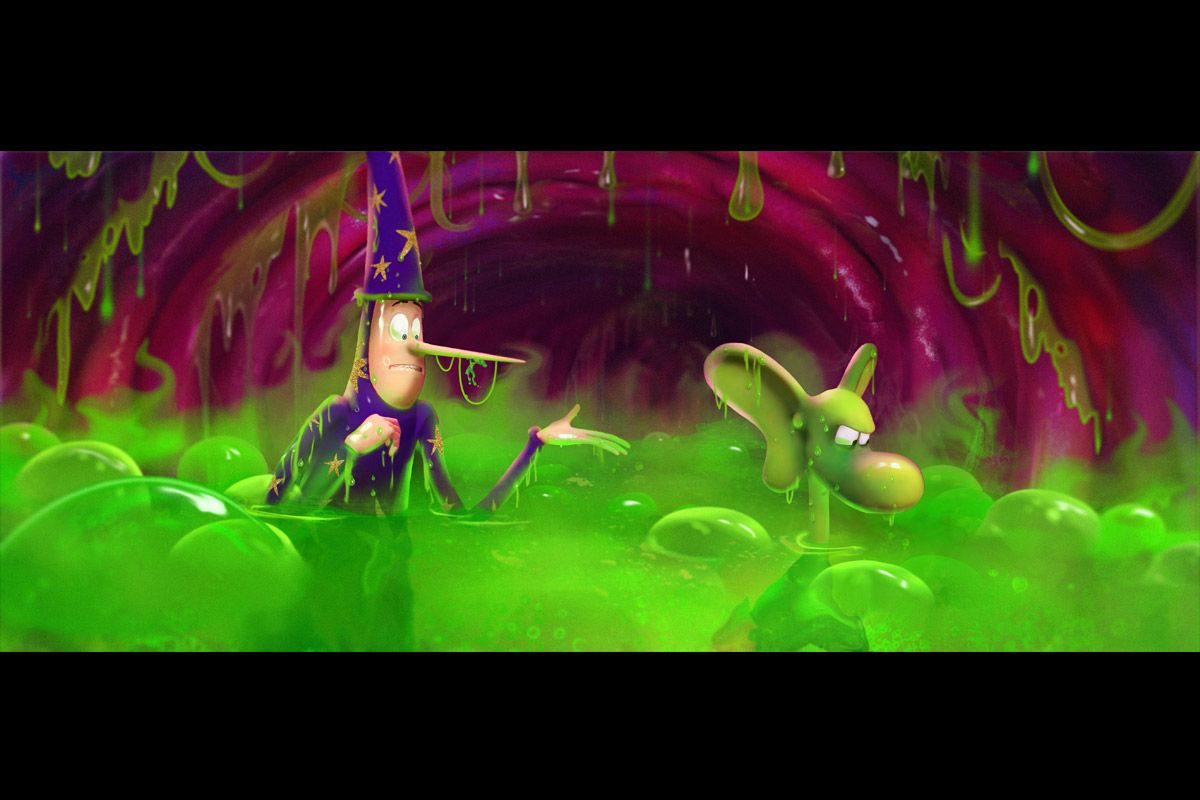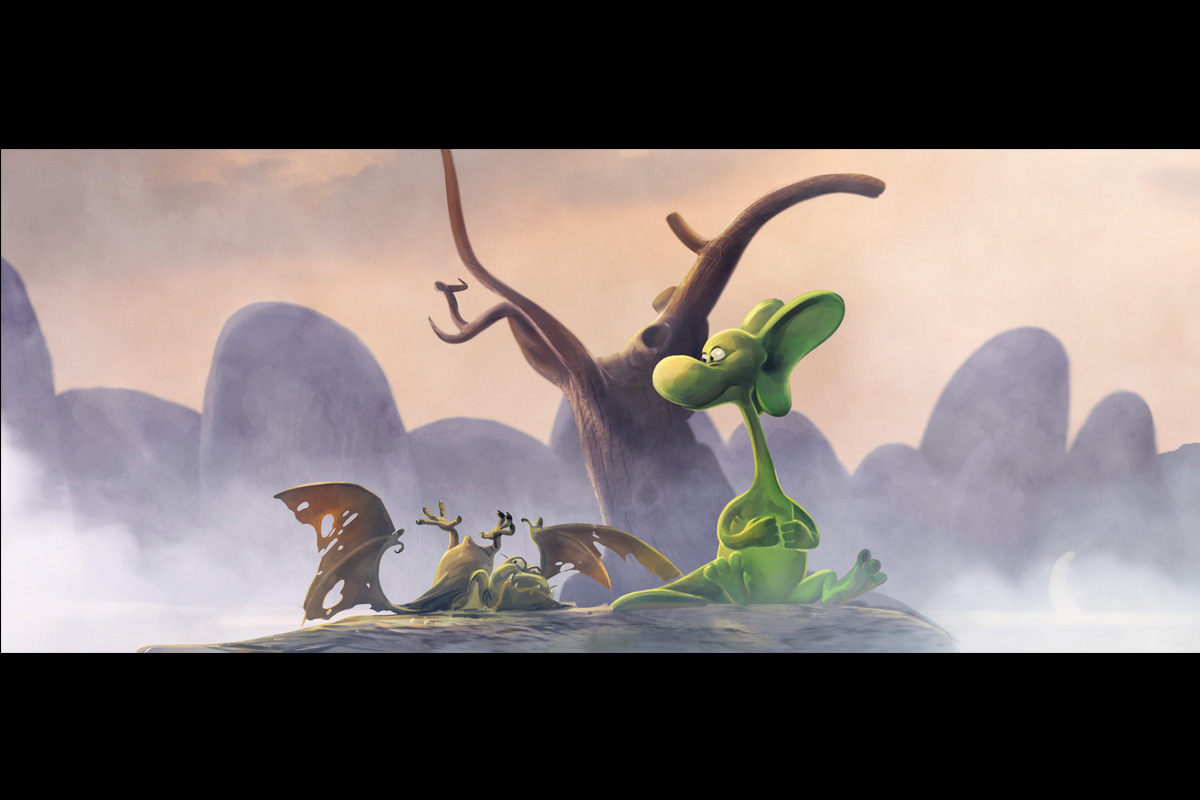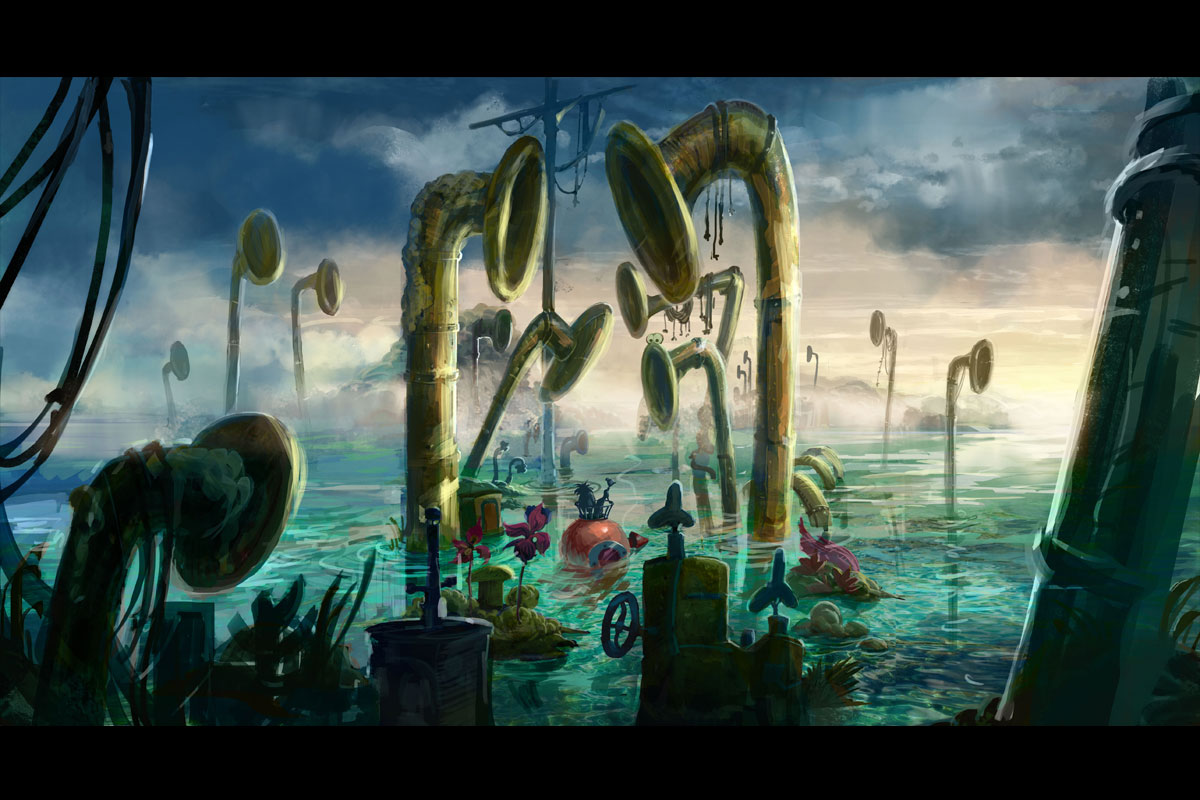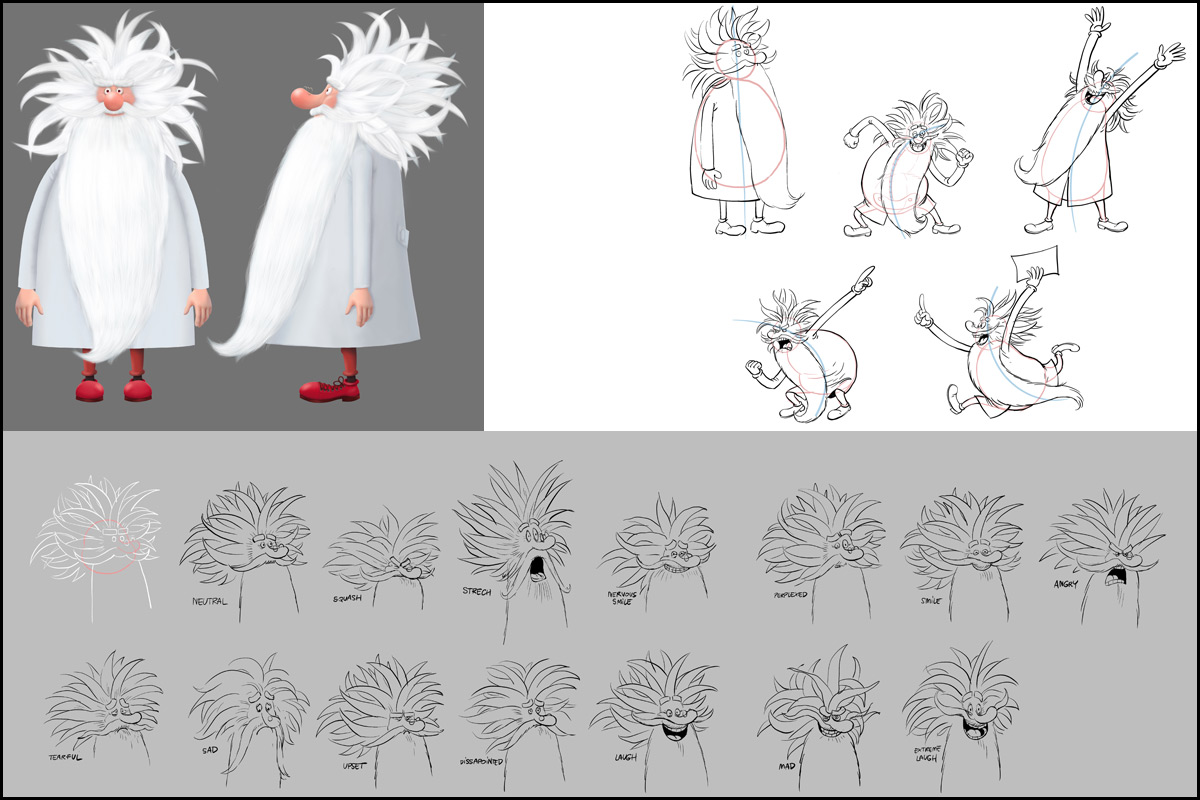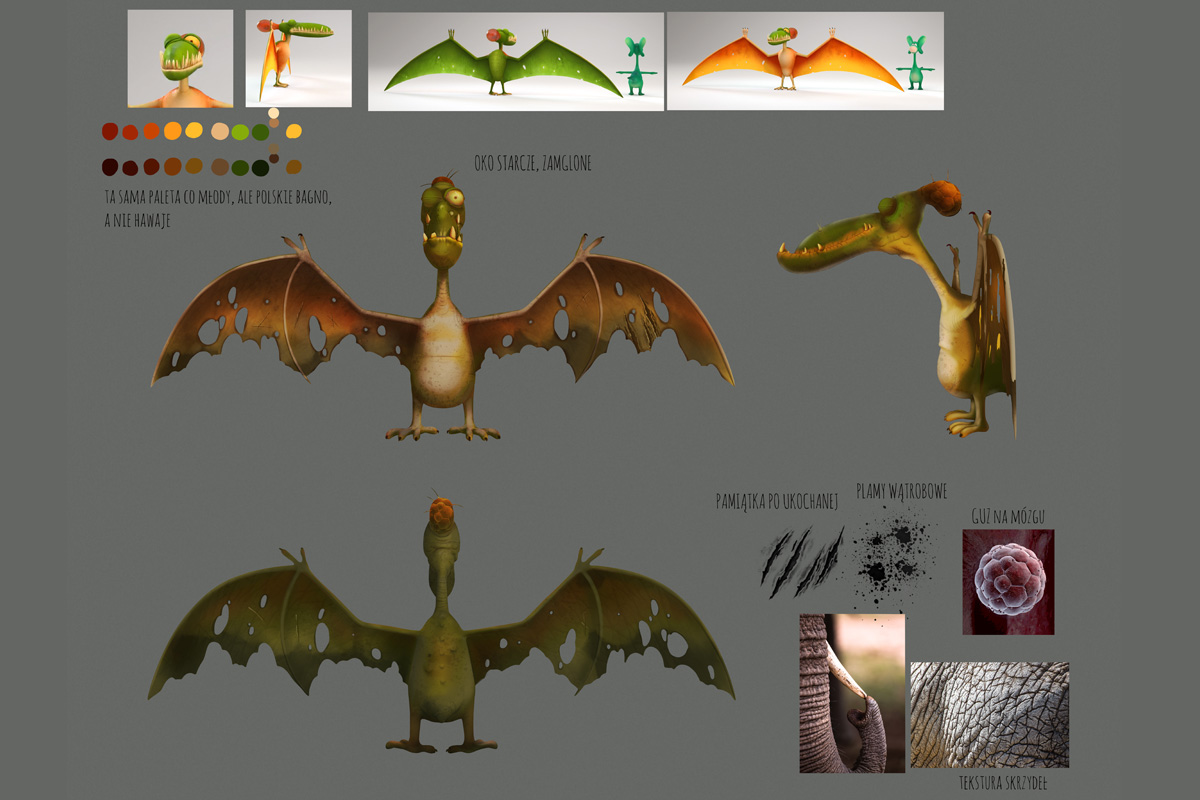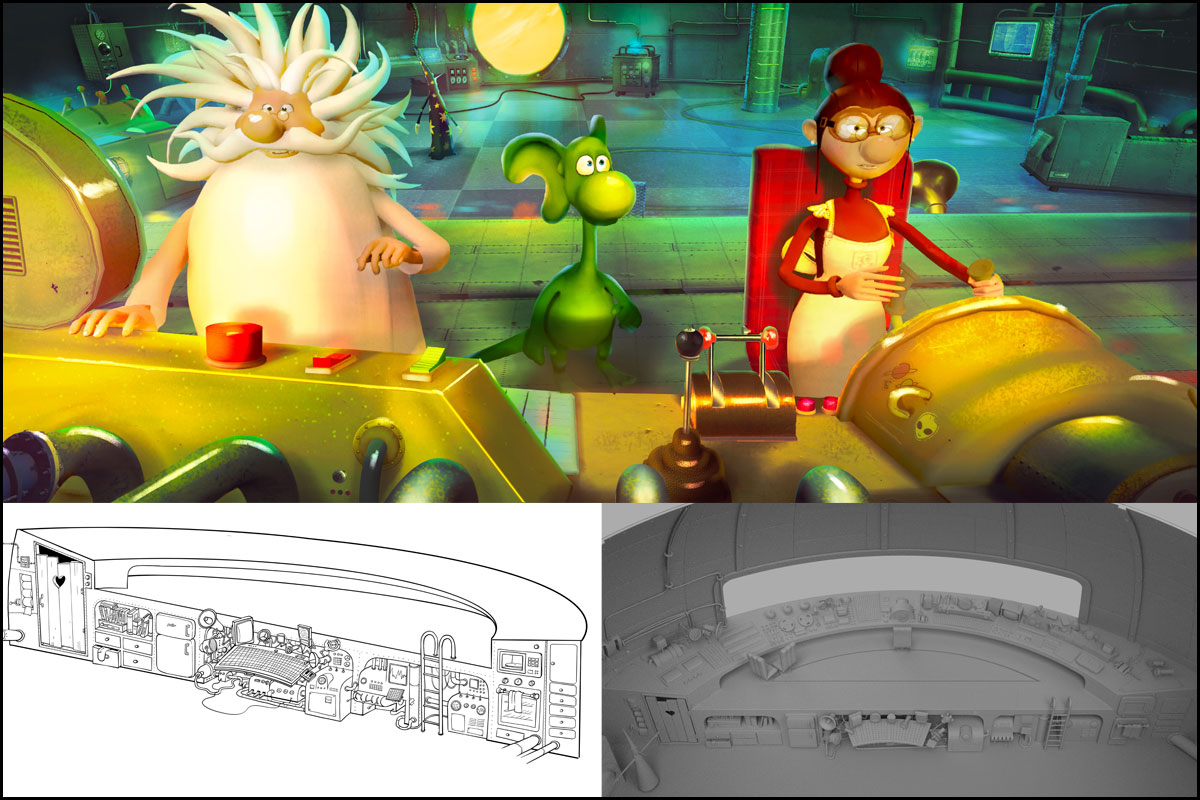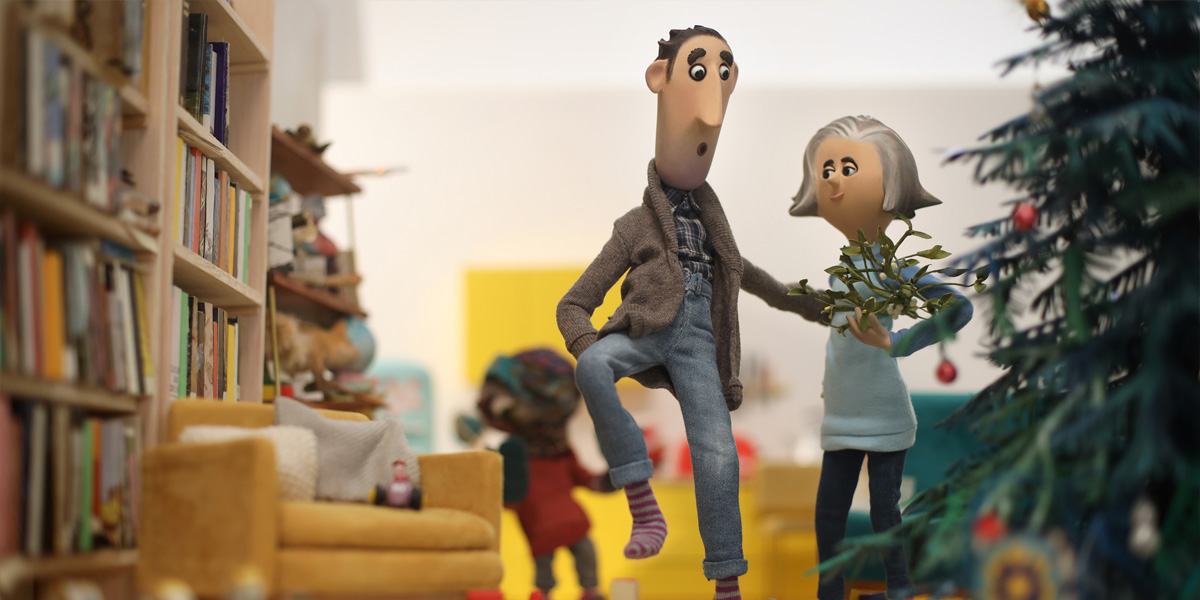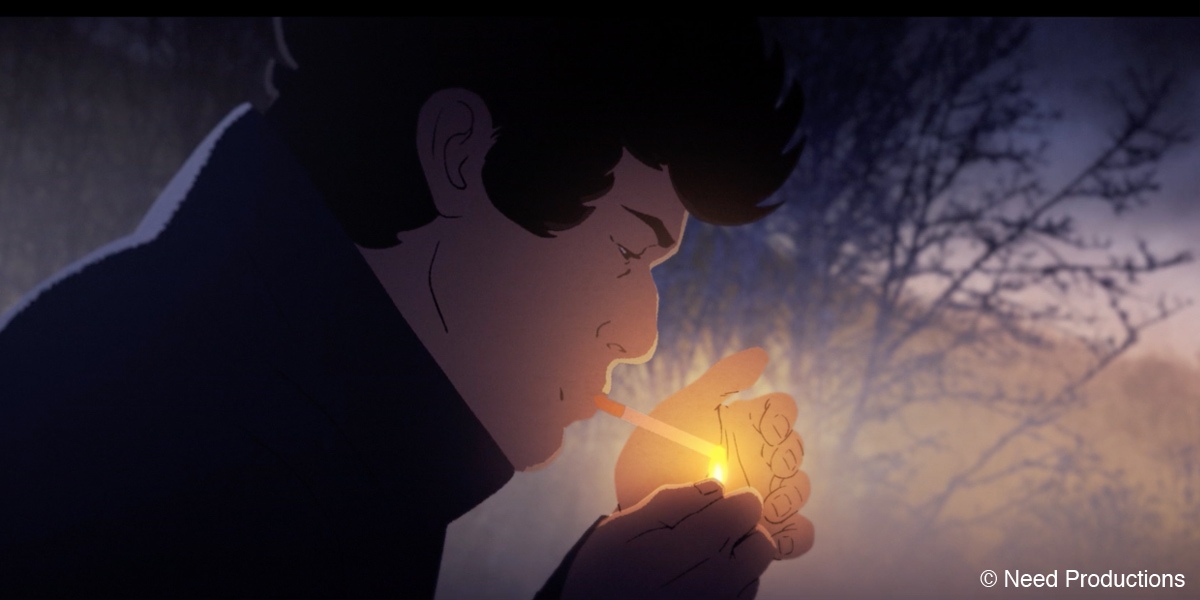Diplodocus
(Status: In Production)
Synopsis
Diplodocus is a little dinosaur dreaming of a great adventure. Unfortunately, he lives in a boring prehistoric swamp. He would love to discover what lies behind the muddy wall surrounding his home. But his overprotective parents won’t let him, as they have built the wall for a reason – they believe their son is irresponsible, and they constantly have to pull him out of trouble.
Diplodocus doesn’t yet know that he actually lives inside a comic book created by Ted, who is a talented but insecure artist. When Ted’s publisher persuades him to get rid of the old-fashioned dinosaurs that are supposedly blocking his career, Ted erases the prehistoric jungle along with Diplodocus’s parents.
In shock, Diplodocus witnesses a strange blankness surrounding his home. Trying to escape from the mortal danger, the little dinosaur jumps out of the comic strip and lands in a completely different story created by Ted. There, he meets the self-absorbed wizard Hocus Pocus and, in yet another story, a pair of quirky but sympathetic scientists – Professor Nervekowsky and Entomology. Together they set off for a great adventure across Ted’s entire creation, in order to save Diplodocus’ family.
Diplodocus
Director: Wojtek Wawszczyk
Screenwriter: Wojtek Wawszczyk (the script inspired by Podróż smokiem Diplodokiem and Antresolka Profesorka Nerwosolka by Tadeusz Baranowski)
Producer: Human (Poland)
Co-producers: Jiri Mika (PFX, Czech Republic) and Dorota Kunysz-Brettschneider (TVP, Poland)
Target audience: Family
Techniques: 3D digital, Live-action
Format: 95’
Diplodocus is a CG animated feature film project inspired by the highly popular comic books by Tadeusz Baranowski. His books have sold nearly 2.5 million copies in Poland.
The film is an action family comedy with a unique storyline, including a thrilling yet funny and surreal adventure that combines CG animation with live-action sequences. The story aims to inspire kids to trust their own creativity and to think outside the box. We think that the film with such a bright atmosphere can be expected to become an inspiring film that family audiences will enjoy watching.
The project was recently pitched at Cartoon Movie 2022. We talk to Wojtek Wawszczyk, the writer/director, and Maks Sikora from Human, the main producer.
Interview with Wojtek Wawszczyk and Maks Sikora
Hideki Nagaishi (HN): Could you give us an outline of the film’s story?
Wojtek Wawszczyk: Diplodocus is a little dinosaur who lives with his overprotective parents, who often – out of excessive concern – do not allow him to make independent decisions. One day they disappear in mysterious circumstances – they vanish in a strange, dense fog. It turns out that this fog is a trace of an eraser, and Diplodocus is the protagonist of a comic book that is being erased by Ted – the author of the comic book. Ted is as dependent on the opinions of others as Diplodocus is. Diplodocus however has an extraordinary power – he can jump to other stories drawn by Ted. In the world of magic, he meets a wizard who can’t do magic. In another world, he meets Nervekowsky and Entomology – scientists who don’t know much about science. They all embark on a crazy and colorful journey, looking for answer to what happened to Diplodocus’ parents. And that’s how they get to Ted. Both the author and Diplodocus must believe in their own intuition to fix the world and make their own lives better.
HN: What are the key points of the film that you would like to appeal to the prospective global audience?
Maks Sikora: Diplodocus is a project created from the very beginning with the international audience in mind. The script was written by Wojtek in English, with support of great experts and creators like Mark Palmer (Rugrats and Penguins of Madagascar) and Kris Pearn (The Willoughbys and Cloudy with a Chance of Meatballs 2). Diplodocus is a sweet character; kids love him. And he’s surrounded by such amazing characters – who are carriers of comedy, their scenes together are really funny. The best CG specialists, great artists, cartoonists from Poland and Czechia are involved in the film project. The quality of animation and the beauty of the images, their originality is just stunning. It’s absolutely crazy what these people can do in such a small team! The scenes with the author of the comic are live-action. Ted will be played by a globally recognized actor, the casting process is happening right now. We’re getting a lot of signals from different countries that they like the project very much. We believe in the international success of Diplodocus.
HN: How did the film project start?
Maks Sikora: About 10 years ago, Wojtek shared with me this idea of adapting a very popular Polish comic book series by Tadeusz Baranowski, created in the 80s. Almost immediately, the long and meticulous process of developing the project began. The first draft of the script was written in 2014 as a result of many months of discussions within the script group. It was then that we pitched Diplodocus for the first time at Cartoon Movie 2014 in France. The response was great which, over the following years, pushed us to refine the script, develop the visual aspect of the film and create the first animation tests. For each of us, this is the first film of such a monstrous scale, every procedure and tool had to be created by us from scratch. We certainly made mistakes along the way. Fortunately, in 2020 the production of the film finally took off. We have an amazing team and a brilliant director. We work very hard, but we’re motivated because the results of our work are just so fantastic. The closer we get to the end, the better it looks.
HN: What part of the original comic attracted you the most and how do you plan to reflect them into the animated feature film?
Wojtek Wawszczyk: These comics are drawn in a unique style. I love their detail, freedom of gesture and crazy color palette. We work hard and with a lot of love for the original drawings to make their style recognizable in the film, while adjusting them with a third dimension and time. Since I’m adapting comics from the 80s, I decided on a number of formal solutions that harken back to the cinema of that time: the use of anamorphic lenses, colored light sources, and using long shots that are quite challenging to animate. The camera work and the mise-en-scène reflect the spirit of the 80s adventure films, such as Steven Spielberg’s classics. In Baranowski’s comic books, the characters are aware of the existence of the author, sometimes they enter into a discussion with him, e.g. when they are not satisfied with the adventures he invents. In my film I use metalanguage as the main axis of the plot. Comic book characters interact with the author, who draws or erases their world. The worlds intermingle and influence each other. This is another reference to the 80s and to the dual world concept that was popular at the time, such as in The NeverEnding Story or Who Framed Roger Rabbit.
HN: What do you take care in the most when you write the script?
Wojtek Wawszczyk: I figure that if I’m going to have to spend a few years with the characters in my films or comics, they have to be interesting, loveable, intriguing and diverse characters. I am first and foremost a director, animator, and comic book creator. When I write a script, I always think through my experiences from my other professions – I want the script to have rich visuals and scenes that are attractive to animate. For example, animating static dialogue scenes is hell. I also look for deeper meanings in my scripts. I respect the script structure, but I care about originality and sincerity of my texts. Nostalgia is quite an important component, too. I write scripts for movies and comic books, which I would like to see, but nobody has made them yet.
HN: Could you let us know the most important characteristic and goal of the visual design of characters and the universe of the story?
Wojtek Wawszczyk: The artwork is obviously based on the drawings from the original comic book. The average viewer is now used to a certain look of a modern mainstream animated cinema and we’re going to follow that direction, but we want to do it our own way. We are still in the process of developing the final look, but we have ambitious plans for it. We want to emphasize the fact that the characters live in the comic book. That’s why the further away from the camera, the more stylized the look is going to be – the further away, the more painterly it will be. We also want to use 2D animation elements. I’m not afraid of stylistic eclecticism, and what’s more, the combination of techniques and the use of color palette is closely correlated with the story. Diplodocus is a film about the power of one’s intuition and imagination. In scenes where imagination prevails, the color palette will be richer and more vibrant. Where imagination is subdued, the colors will also be subdued. And in those moments where certain elements are created against the will of the comic book author, we will consciously disturb the color harmony. In the live-action scenes, the set design and costumes will refer to the design from the animated parts. The camera work will also be consistent.
HN: Could we hear your plan or vision for the music of the film?
Wojtek Wawszczyk: The spirit of the eighties that will be present in the film Diplodocus will also be in the soundtrack. Most of the music will be composed for orchestra and synthesizers. There will also be synth pop. The 80s all the way!




